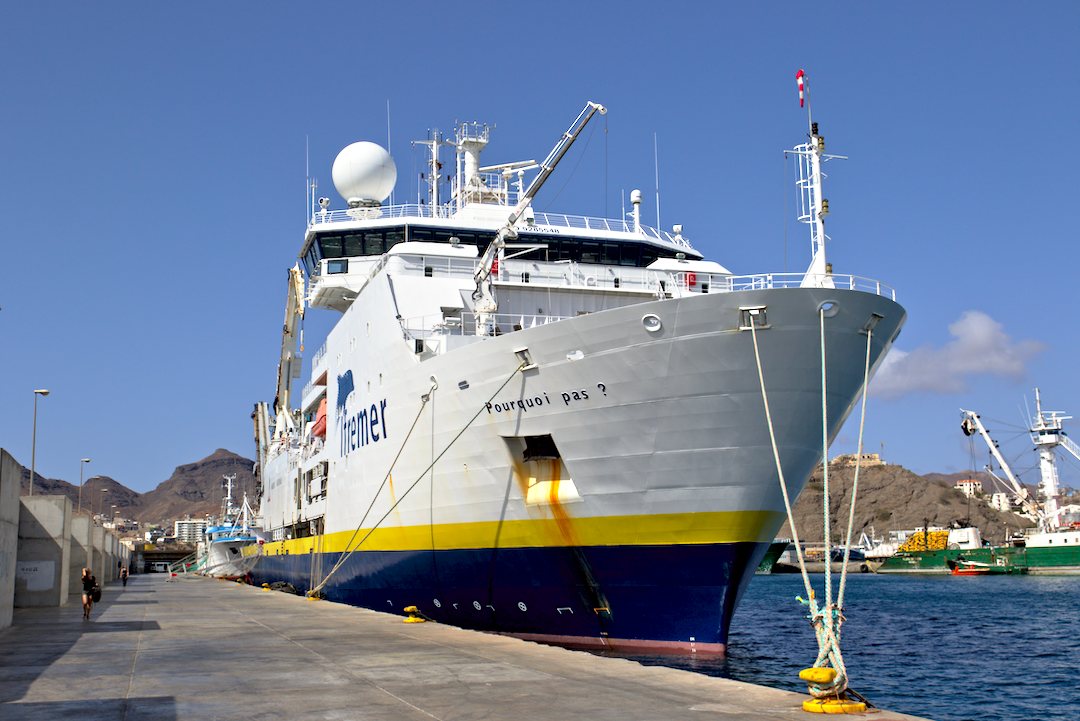On Friday, July 26, the goal of the dive number 6 is to cross the transform fault, the active zone between the old northern part and the more recent southern part. The dive profile corresponds to the crossing of the fault, a rise along a hill, with about 300m of altitude and finally follow the top of the hill.
The departure is announced for 8:30 local time. This dive is deep, the initial immersion is at 5740m, we will go down to 5750m and finish at 5470m. We start the profile at 11:15. The first meters resemble a lunar soil, because there is almost only sediment, only a few small blocks are scattered on which are hung anemones.
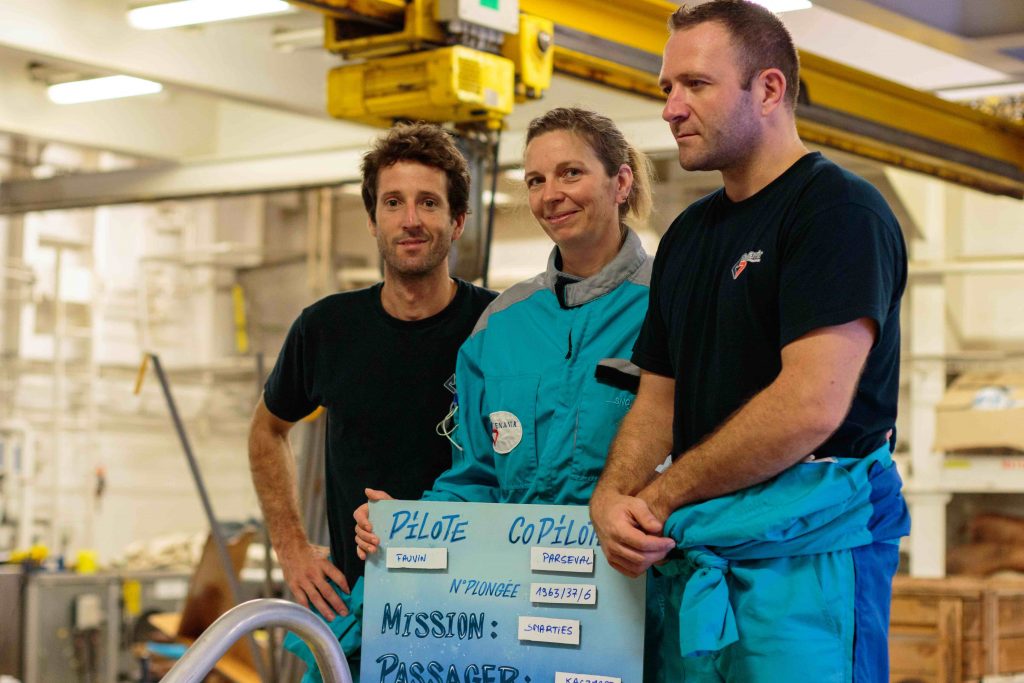
The team. P. C. Hamelin. © Ifremer 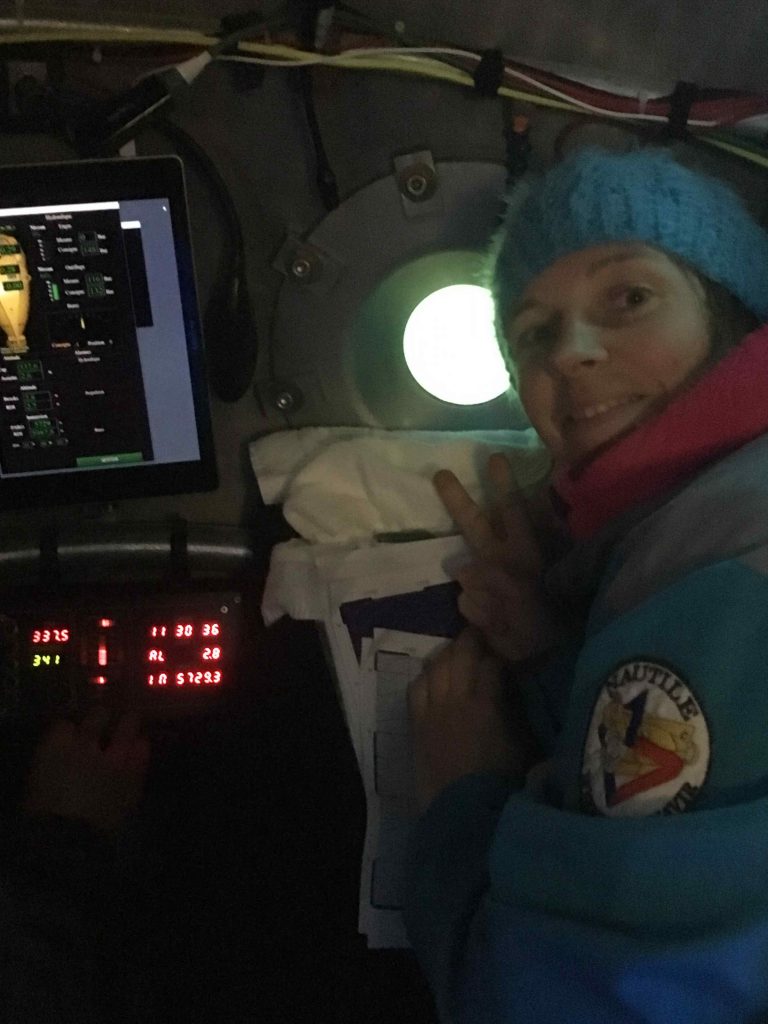
Mary-Alix in the Nautile. P. G. de Parseval © Ifremer 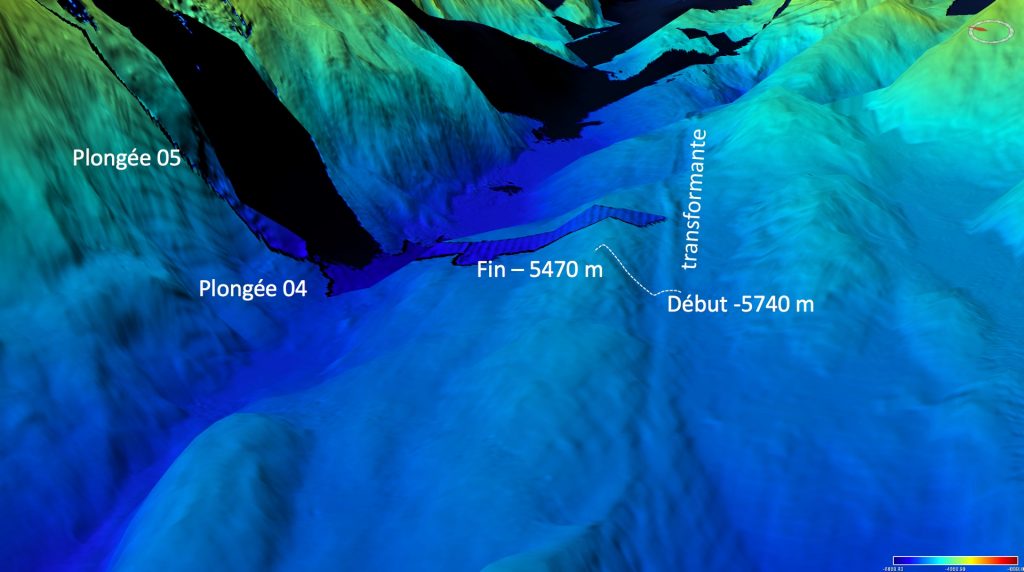
The dive track. © SMARTIES cruise
After about 15 minutes, at 5716m, some carbonate beds with an orientation of N70-80 are visible, the rest is only sediment.
At 5698 m depth an outcrop on the fault, a breccia that shows plans oriented around N60. We take a block that turns out to be a piece of peridotite.
Subsequently, along the hill, the slope was not very important, and the sedimentation still intense. Most of the outcrops consisted of rubble, or large blocks of breccia, which we sampled. Arriving at the top of the hill, at 5450m of immersion, an outcrop allowed us to sample a polymictic breccia with clasts of cm-centimetric size. After crossing the plateau, before descending (at 5410m), a new polymictic breccia was sampled, this time with clasts of centimeter size.
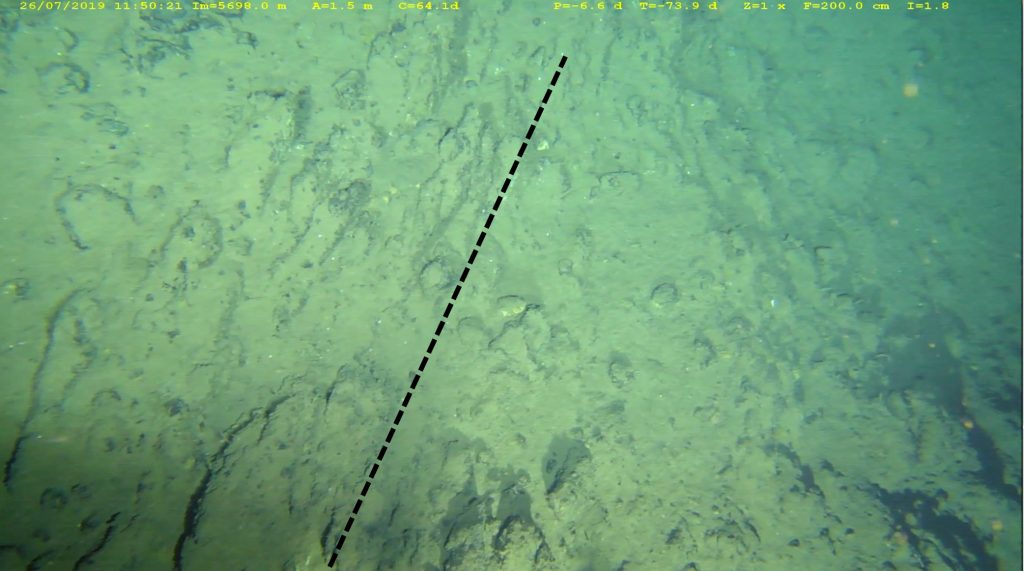
Breccia with N60 oriented plans. © SMARTIES cruise 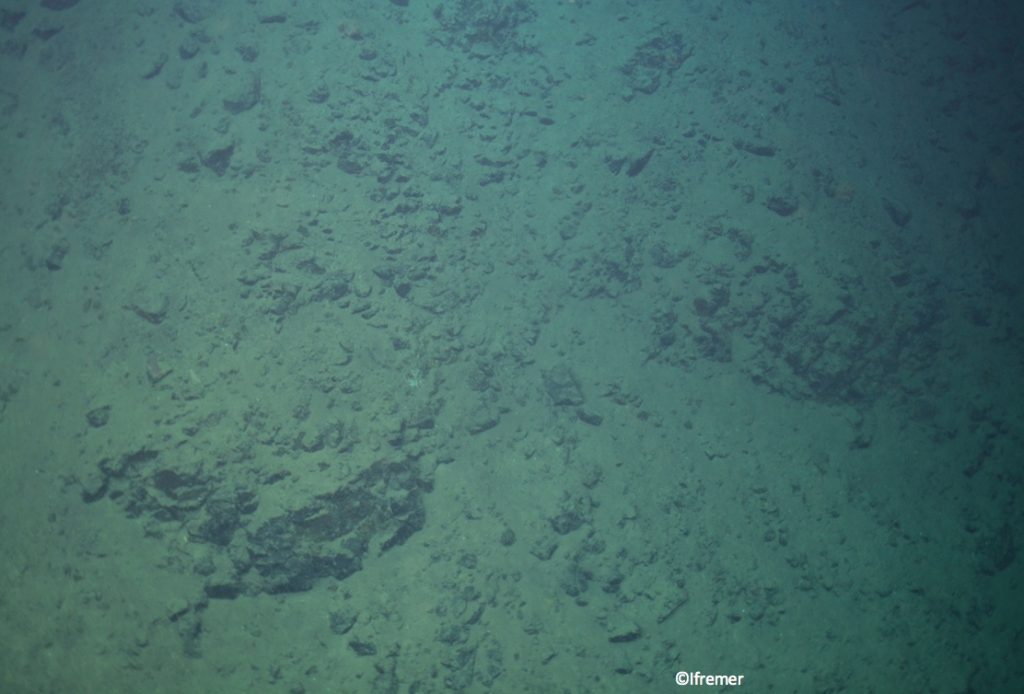
Large breccia blocks. © SMARTIES cruise 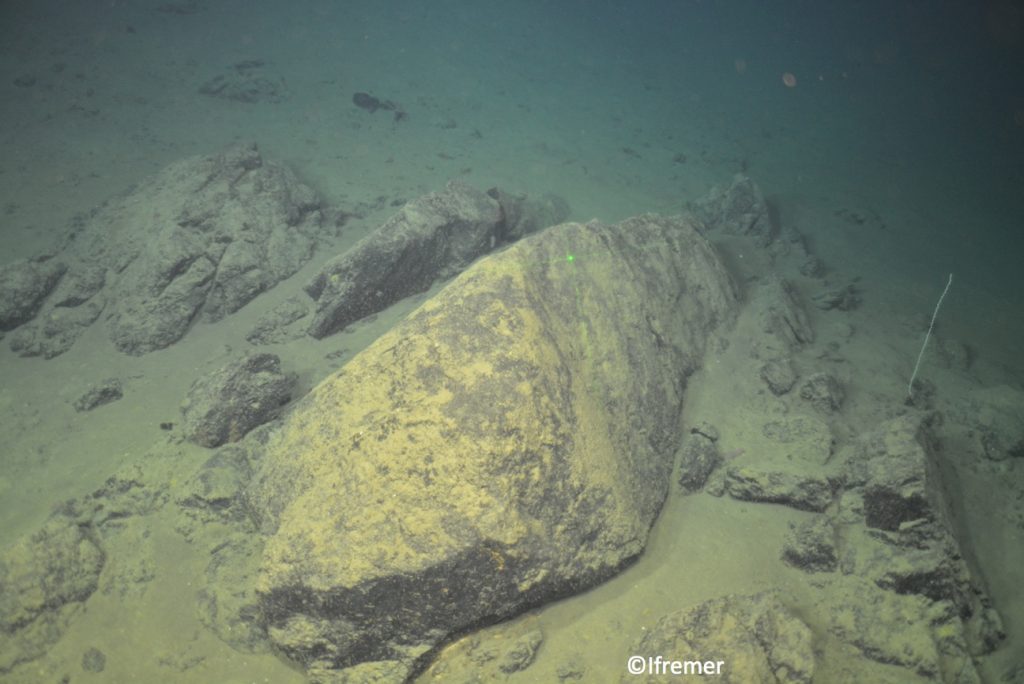
Polymict breccia. © SMARTIES cruise
The continuation of the profile, following the ridge, did not offer beautiful outcrops, only fields of blocks in the sediments.
We left the bottom at 17H15, and came back to the surface around 18H15. In total, we collected 19 samples showing a wide variety of lithologies. The blocks are all components of the breccia zone and are essentially plagioclase peridotites with a porphyroclastic or mylonitic texture and gabbros with little deformation.
By M.A. Kaczmarek
